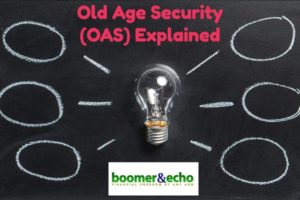 Old Age Security (OAS) was originally intended to be a universal program to provide income support payments to Canadian seniors. It is one of the cornerstones of Canada’s retirement income system.
Old Age Security (OAS) was originally intended to be a universal program to provide income support payments to Canadian seniors. It is one of the cornerstones of Canada’s retirement income system.
It is not a pension plan. You don’t make contributions. OAS is a government benefit program that is financed out of general revenue.
Related: Is our Old Age Security Program Sustainable?
Employment history is not a factor in determining eligibility. You can receive OAS benefits even if you have never worked, or are still working.
Residency requirements have to be met. The amount you receive is determined by how long you have lived in Canada after the age of 18.
Everyone who has been a resident of Canada for at least ten years (after age 18) is eligible to collect OAS starting at age sixty-five. Normally, you qualify for the full amount only if you have been a resident for at least forty years after turning 18.
You may still qualify for full or partial payments if you meet certain other requirements.
Up to September 2017, the maximum monthly benefit is $583.74. This rate is reviewed four times a year and may be adjusted based on the cost of living measured by the Consumer Price Index. OAS is taxable income.
Anyone who receives OAS and whose income falls below a certain level may be eligible to receive additional non-taxable monthly payments.
- The Guaranteed Income Supplement provides a monthly benefit to low income OAS recipients. It is an income tested benefit. This means your total income from the previous year (combined income for couples) is used to determine your eligibility.
- Allowance is available to 60-64-year-old spouses/common-law partners of OAS recipients who also receive GIS.
- If you are sixty to sixty-four years old and are widowed, you may be eligible to receive the Allowance for the Survivor.
OAS for higher income seniors
One of the most despised tax amendments was the Social Benefits Repayment Tax, also known as the “clawback.”
If a person’s net income exceeds a certain level – called a threshold – they must repay some, or all, of their OAS benefits at a rate of fifteen cents for every extra dollar received.
For the 2017 income year, the clawback applies to anyone whose net income exceeds $74,788 up to a maximum of $117,954, when payments cease completely.
Repayment is calculated on the difference between your income and the year’s threshold amount:
Tom’s income is $82,000. He is $7,212 over the threshold. He has to repay $1,081.80 (7,212 X 0.15).
Enrolment
In order to streamline the process, you may possibly be automatically enrolled to receive OAS. Service Canada will send you a notification letter the month after you turn 64. If you don’t receive this letter, you will have to apply.
GIS, Allowance and Allowance for the Survivor must be applied for (at least three months prior to your 65th birthday).
There is a maximum of one year of retroactive payments for late applications.
Receive OAS now or later?
You can defer your payments up to as late as age 70. The payments would increase 0.6% for every month you delay to a maximum of 36%. You will not be eligible for GIS during that period of time.
Related: When to take CPP – Early, Late, or Somewhere in-Between
Before delaying the payments think about:
- current and future sources of income
- plans for retirement
- health
Conclusion
To calculate the amount of your monthly benefit, see www.servicecanada.gc.ca/eng/services/pensions/oas/payments/index.shtml
 Marie Engen is the “Boomer” half of Boomer & Echo. In addition to being co-author of the website, Marie is a fee-only financial planner based in Kelowna, B.C. This article originally ran at the Boomer & Echo site on August 8th and is republished here with permission.
Marie Engen is the “Boomer” half of Boomer & Echo. In addition to being co-author of the website, Marie is a fee-only financial planner based in Kelowna, B.C. This article originally ran at the Boomer & Echo site on August 8th and is republished here with permission.

